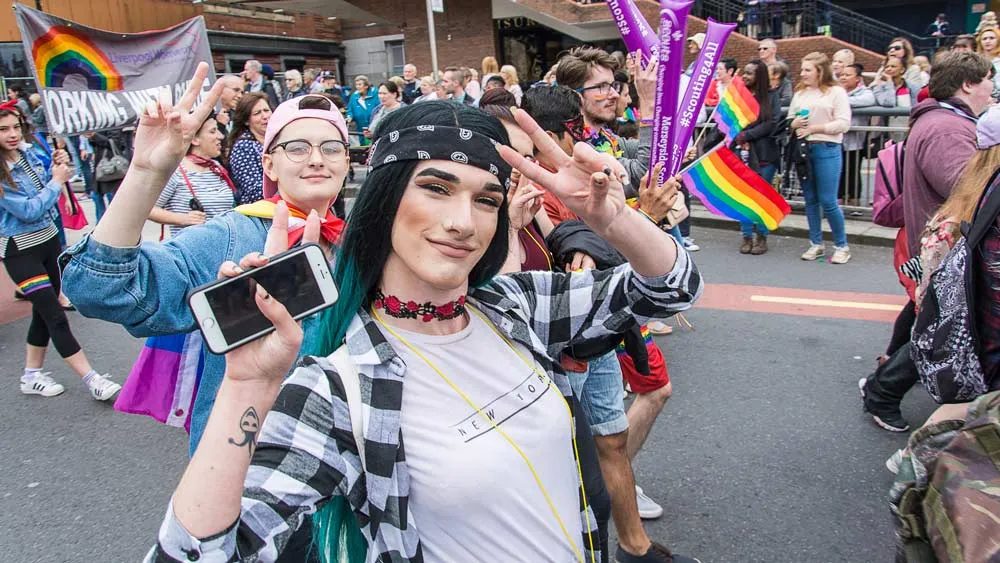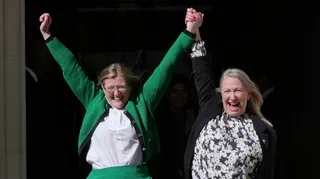June 18, 2017
Update: LGBTQ Seniors and Federal Surveys
Maria Dominguez READ TIME: 3 MIN.
Within the first few months of the Trump administration, the U.S. Department of Health and Human Services (HHS) gave a subtle wound to the American LGBTQ community. Two HHS nationwide surveys - the "National Survey of Older Americans Act Participants" and the "Annual Program Performance Report for Centers for Independent Living" - removed questions identifying respondents' sexual orientation and gender identity.
Both surveys are vital for the senior community, and erasing LGBTQ identity questions makes it much harder to determine how well current legislation and programs are serving the population.
"[That makes] it impossible to assess whether key programs for seniors and people with disabilities are meeting the needs of LGBT Americans," wrote a research team from the Center for American Progress. "By removing this data, the Department of Health and Human Services and Secretary Price risk erasing the experiences of LGBT seniors and people with disabilities and making it impossible for HHS to identify and end disparities and discrimination in taxpayer-funded programs."
The National Survey has featured LGBTQ questions since 2014, an Obama-era addition. Released every year, the nationwide data collected regards social support and nutrition programs under the Older Americans Act (OAA).
In fact, since the federal Census collected every decade fails to record LGBTQ populations, exact figures related to the community do not exist at all. However, estimates can be of some value.
The Williams' Institute of the University of California, Los Angeles performed a 2011 survey, concluding that 3.8 percent of U.S. adults identify as LGBTQ. A 2012 Gallup poll's results were similar, estimating 3.4 percent of the United States' [2017 estimate 325 million, per U.S. Census Bureau] population. More recently, a 2014 National Health Survey from the Centers for Disease Control and Prevention - though only discussing sexual orientation, not gender identity - found 2.3 percent of American adults were LGB.
"It is estimated that 2.4 million LGBT older adults over 50 live in the United States," said Dr. Ilan Meyer, Williams Institute distinguished senior scholar of Public Policy. "That number is expected to double by 2030."
Progressive politicians have recently made an effort to address the lack of concrete data on LGBTQ populations. The LGBT Data Inclusion Act introduced in 2016 and later shelved in Congress would have required the federal government to collect data on the sexual orientation and gender identity of citizens.
"To go uncounted in our society is to be unseen by our policymakers," read a statement by the bill's main sponsor, Rep. Raul Grijalva. "Enshrining in law the vital right of this demographic to be counted would have prevented future administrations, like this one, from pursuing policies that could harm the LGBTQ community."
A true illustration of such policies can be found right here at home; North Carolina's infamous House Bill 2 (HB2) is just one example cited by advocates like Laura Durso, senior director of the LGBT Research and Communications Project at the Center for American Progress.
"We're fighting over LGBT rights on a daily basis," Laura Durso told The Daily Beast. "North Carolina's HB2 is a bill that discriminates against LGBT people. It's not OK that I can't tell you exactly how many LGBT people there are in North Carolina."
A Williams Institute study by Dr. Meyer and Soon Kyu Choi makes a strong point regarding the necessity of data on LGBTQ Americans' healthcare.
"The needs of older LGBT adults are quite different than those of the non-LGBT population," authors wrote. "LGBT older adults are sometimes apprehensive of how they'll be treated by healthcare providers or in senior care facilities. We need to ensure that LGBT seniors will receive sensitive and effective care wherever they go."
Policy attorney Heron Greenesmith analyzed "Understanding Issues Facing LGBT Older Adults," a report released in a collaboration between the Movement Advancement Project and Services & Advocacy for GLBT Elders (SAGE), for The Huffington Post. The report named several key problems and suggested policy changes to address them.
"Health and wellbeing, economic security, and social connections are among the cornerstones for successful aging," wrote Greenesmith. "Yet these are areas in which many LGBT elders face substantial barriers - stemming from current discrimination as well as the accumulation of a lifetime of legal and structural discrimination, social stigma, and isolation."
The recommended policy changes included providing equal help to LGBTQ veterans and expanding nondiscrimination protections both federally and in private senior housing. The report also recommended ensuring that government programs recognize same-sex families, and that the government designate LGBTQ seniors as an underserved population to be targeted for HHS services.
"Being seen really matters when we're talking about trying to reduce stigma against LGBT communities," said Durso. "It is meaningful that the federal government steps up and says [that] we recognize the LGBT community as a community, and as a community with needs, resiliences, and contributions."

 Copyright QNotes. For more articles from QNotes visit
Copyright QNotes. For more articles from QNotes visit 





